A review and sample photos of the SUPER ELMAR R 15mm f/3.5 used with a SLR camera + film, a mirrorless camera, and a digital SLR camera.
- Please see the disclaimer regarding advertising here.
- Italicized links in the text are advertisement links that take you to other sites.
Table of contents
Gallery
写真作例の撮影は以下のカメラを使用した。
- LEICA R8 +KODAK ProImage100(SLR camera + negative film)
- CANON EOS-1D Mark-IV(Digital SLR camera)
- CANON EOS 7D(Digital SLR camera)
- LEICA M-P Typ240(mirrorless camera)
- LEICA SL Typ601(mirrorless camera)
- SONY α7Sii(mirrorless camera)
Review
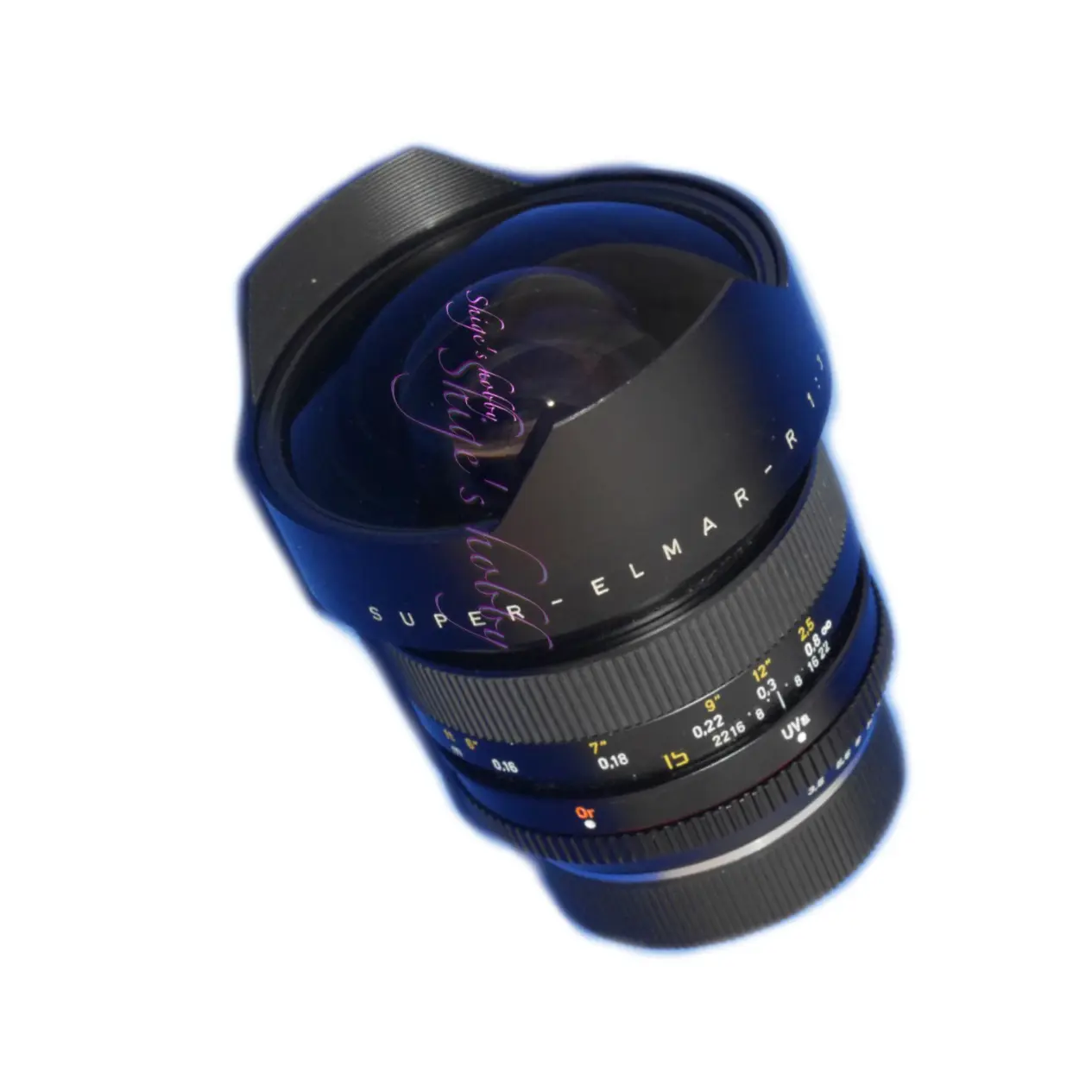
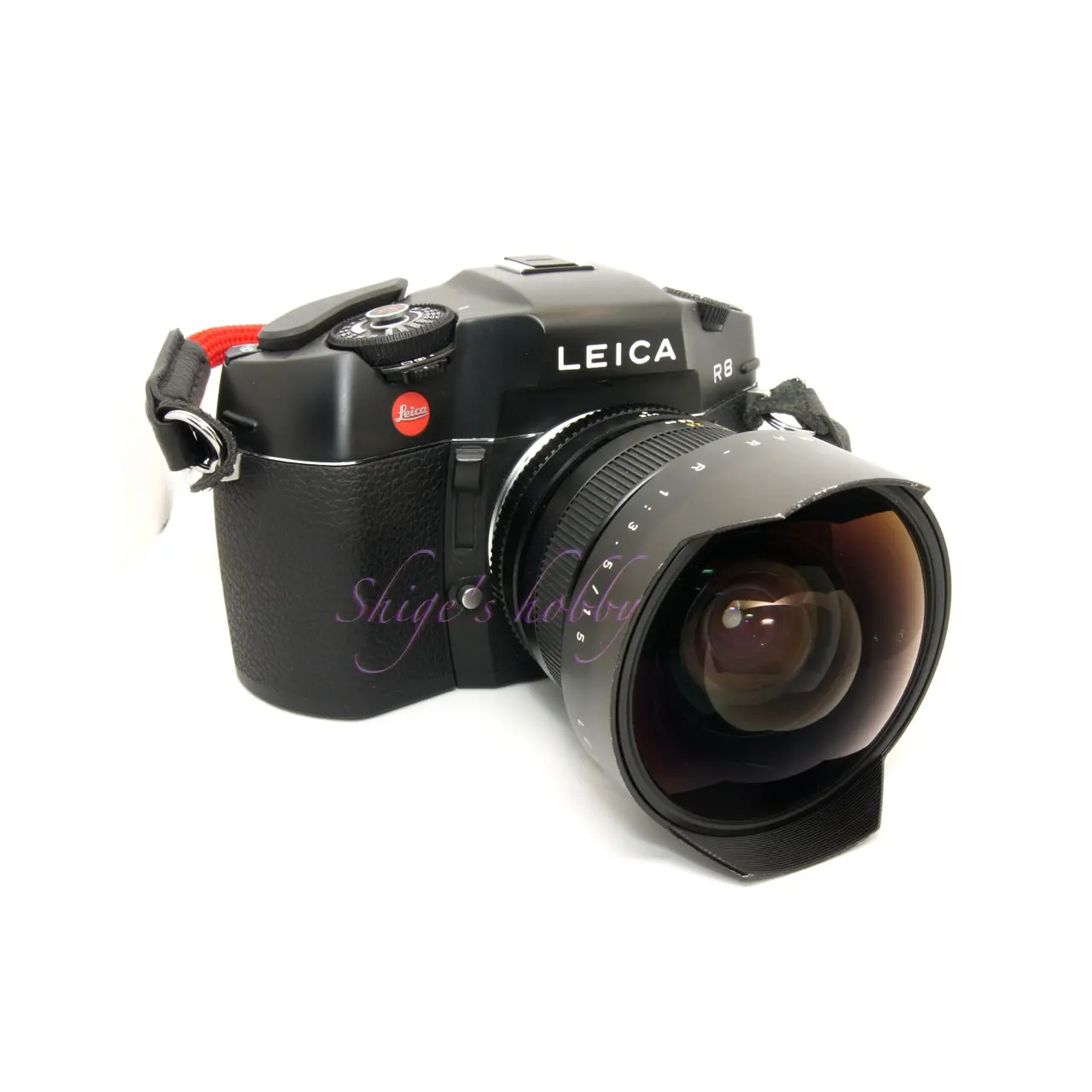
1.Overview
The SUPER ELMAR R 15mm f/3.5, released in 1979, is one of the widest lenses in the Leica R-mount. At the time of its release, it was a unique wide-angle lens, with approximately 3,000 units produced. It features 13 elements in 12 groups, a five-blade aperture, and a minimum focusing distance of 0.16m.
While a filter cannot be attached to the front, a dedicated front cap (14294) is available. The lens also comes with four built-in color filters.
The Super Elmar mount was released in 3-CAM (order number: 11213) and with a ROM terminal (order number: 11325). While I’ve never seen one with a ROM terminal on the used market in Japan, it occasionally comes up for sale on eBay. It’s unclear whether an R-only CAM version exists.
2.Usability
The SUPER ELMAR R 15mm f/3.5 is not a Leica lens, but is designed and manufactured by Carl Zeiss. For details, see “Specifications and Considerations.“
Because this lens is an ultra-wide-angle lens, it’s difficult to see the focal peak, and when shooting distant subjects, a setting of around F5.6 results in almost complete pan focus. For close-up shots, I often stopped down and roughly estimated the focus by eye, but the mirrorless EVF allows me to magnify the focus position, so I’ve started to focus more precisely.
When shooting, if the sun is directly in front of me, there’s no eerie glow, but if the sun is placed at an angle, flashy ghosting can occur, so you need to be careful about the position of the sun. At wide open aperture, the corners appear blurry (I think the out-of-focus blur at the edges can sometimes make this appear blurry), but since it’s a vintage ultra-wide-angle lens, I think this is within acceptable limits.
As mentioned in the overview, this lens has a complex lens construction of 13 elements in 12 groups, which shows the difficulty of creating a focal length of 15mm with a normal lens that isn’t a fisheye lens.
The minimum focusing distance is 16cm and the lens is about 9cm long, so the distance between the subject and the front element is about 7cm. When taking close-up shots of flowers, for example, care must be taken, as the front element may touch another subject nearby if you’re not careful.
Also, the focus ring on the lens I previously owned was light and loose, making it stressful to operate, but the lens with a scratch on the front element I acquired in 2023 has a focus ring that’s just the right amount of stickiness, and it seems the lens on the previous one had come loose and become loose.
I used it with a , and the camera and lens weighed about 1.5kg, so it felt heavy. The lens I had was a 3-CAM lens, so I sold it when I bought another lens, but I bought the scratched 3-CAM lens back in 2023.
■Film camera LEICA R8
When using it with the LEICA R8 film camera, the lens’s deep depth of field makes it often difficult to determine the peak of focus in the viewfinder, so if I had the shutter speed available I would often stop down the aperture a little and set the distance to achieve pan focus.
The soft, not-too-sharp resolution of the negative film I used matches the lens well, creating a nice atmosphere. If using black and white film, I get the impression that a coarser grain film would be a better fit.
■CANON digital SLR camera
The Canon EOS series cameras, EOS-1D Mark-IV with an APS-H size sensor and EOS 7D with an APS-C size sensor, can be used without any problems. When I owned the EOS 1Ds Mk-III with a 35mm full-frame sensor, I didn’t own the lens, so I haven’t checked its compatibility. According to the Canon Leica-R Compatibility Database, it appears to be compatible with the 1Ds series, but even this database has some inaccuracies, so you’ll need to check it with your own camera before using it.
For the EOS-1D Mark-IV, multiplying the 35mm equivalent distance by a conversion factor of 1.3 gives a focal length equivalent to 19.5mm, while for the EOS 7D, multiplying the 35mm equivalent distance by a conversion factor of 1.6 gives a focal length equivalent to 24mm.
Both cameras are equipped with image sensors with less than 20 megapixels, and because the sensor size is smaller than 35mm film, the periphery of the lens is cropped, extracting only the best image quality from the center of the lens, eliminating the vignetting that is a problem with wide-angle lenses. Furthermore, the center of the lens is less susceptible to distortion, resulting in a cleaner image. This means that higher-quality images can be obtained in terms of resolution and distortion than wide-angle zoom lenses with focal lengths around 15mm.
■LEICA-M(Typ240) & Leica-SL(Typ601)
I used the Leica R-Adapter L (16076) with the LEICA SL typ601.
Using the Leica R-Adapter L (16076) allows lenses with a ROM terminal to transfer lens information to the camera, but since the lens I own is a 3CAM, lens information cannot be transferred via the electronic contacts, which is the same as using a cheap, non-genuine adapter.
The LEICA M-P typ240 is a rangefinder camera, so you cannot check the focus position in the viewfinder unless you are using an M-mount lens that is linked to the rangefinder. This is because even if you attach an R-mount lens to the camera via the Leica R adapter for M (14642), it will not link to the camera’s rangefinder.
Therefore, in order to check the focus position, you will need to attach an external electronic viewfinder, the EVF-2.
The LEICA M-P typ240 with the EVF-2 attached operates in the same way as a mirrorless camera, but compared to when an M-mount lens is attached to the camera, the camera’s processing speed slows down due to the EVF processing, and the response when pressing the shutter is significantly slower.
Also, if you use the R adapter for M (14642), you can select a registered R-mount lens from the menu and record it in Exif. Lenses not registered in the menu cannot be added, so you will have to choose a similar lens.
■SONY α7Sii
The camera body is compact compared to the lens size, so when the camera and lens are attached, the body is overshadowed by the lens. The mount adapter used is an R-E mount adapter made by Metabones.
Although it is a 35mm full-frame sensor, it has a modest 12 megapixels, so there is no significant degradation in image quality even when using this old wide-angle lens.
It is possible to stack the R-M mount adapter and M-E mount adapter, but since this lens is heavy at 800g, we do not recommend stacking mount adapters.
■HASSELBLAD X2D-100C
The HASSELBLAD X2D-100C is a mirrorless camera equipped with a medium-format digital sensor, which is larger than the sensor size of 35mm film. The focal length conversion factor for 35mm film is 0.8x. If the image circle covered the medium-format digital sensor, it would be an ultra-wide-angle lens equivalent to 12mm. Unfortunately, the image circle of the SUPER ELMAR 15mm is limited to 35mm film. In the image below, the outermost part represents the shooting range of the medium-format digital sensor, while the white frame within represents the acceptable range for an image excluding vignetting. Looking at the masked peripheral area, you can see the shadow of the lens hood. Conversely, removing the lens hood would likely allow for a wider image, but since the areas where the hood is reflected are subject to image distortion, it is likely that the usable image range of this lens would remain unchanged even without the hood.
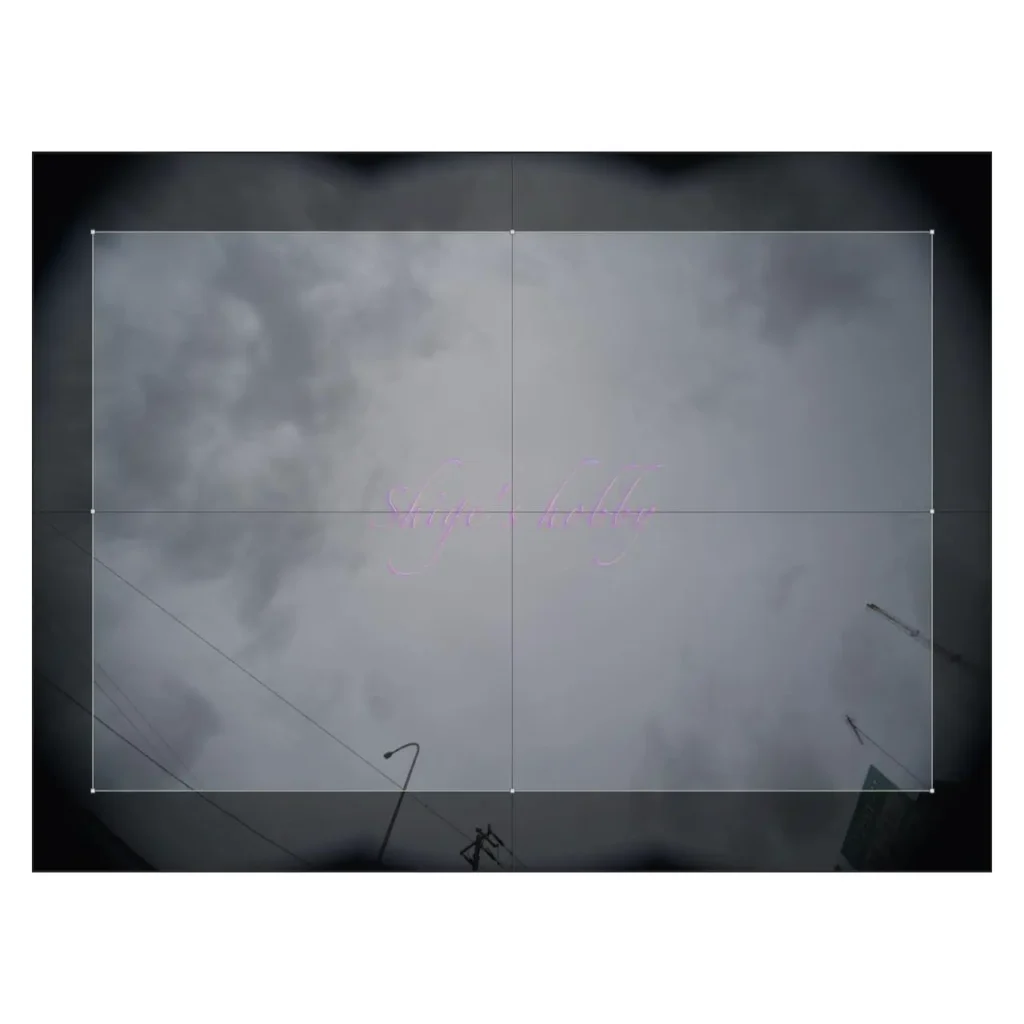
3.Summary
In conclusion, to sum up the SUPER ELMAR R 15mm f/3.5, it is a large, heavy ultra-wide-angle lens with an older lens design.
When shooting with a digital camera, there are times when the loss of resolution at the edges is noticeable, and in some cases the image quality is inferior to that of the latest wide-angle zoom lenses, so when considering purchasing one, you will need to consider the price difference with the latest zoom lenses and how often you will use prime lenses.
Specifications, considerations, etc.
The SUPER ELMAR R 15mm F3.5 is a lens manufactured by Carl Zeiss, while its successor, the SUPER ELMAR R 15mm F2.8, is a lens manufactured by Schneider.
The SUPER ELMAR R 15mm F3.5 has several sibling lenses, including those from Yashica-CONTAX, PENTAX, and Rollei QBM. Nikon also has a manual 15mm F3.5 lens with the same specifications, but it is not the same as this lens, as it has a lens configuration of 11 groups and 14 elements. While Leica R-mount lenses are not produced in large numbers, they are not uncommon when versions for other mounts are included, and lens prices vary depending on the lens brand.
In addition, with regard to 35mm film compatible lenses since the 2010s, the focal length of 14mm to 15mm, close to that of this lens, has been covered by ultra-wide-angle zoom lenses, and prime lenses have become less popular. Among these, prime lenses with a focal length of 15mm have been released, with Carl Zeiss releasing the famous Milvus 2.8/15mm in 2017. SIGMA has also released two large-aperture ultra-wide-angle prime lenses with a focal length of 14mm or less: the 14mm F1.8 DG HSM in 2017 and the Art 14mm F1.4 DG DN in 2023.
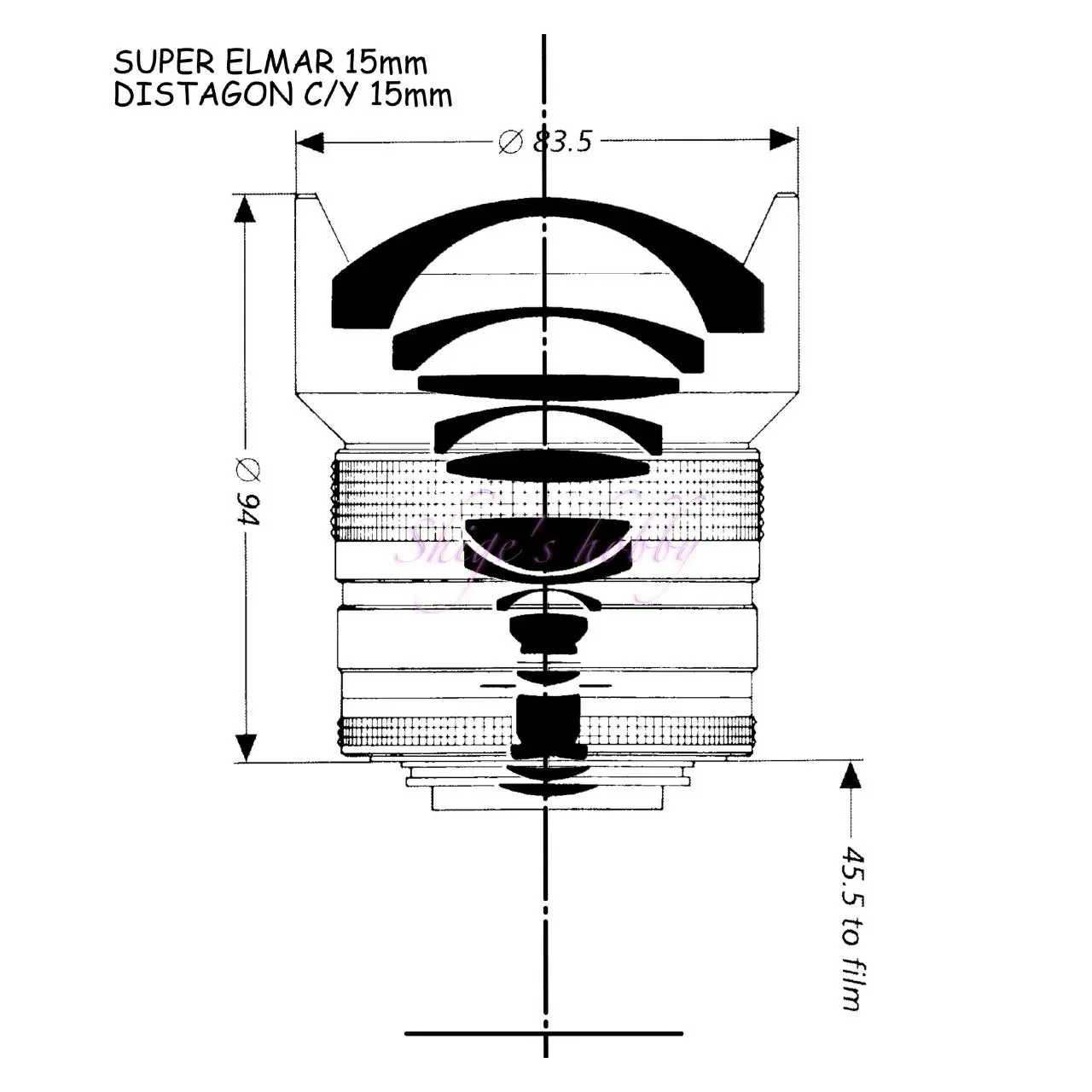
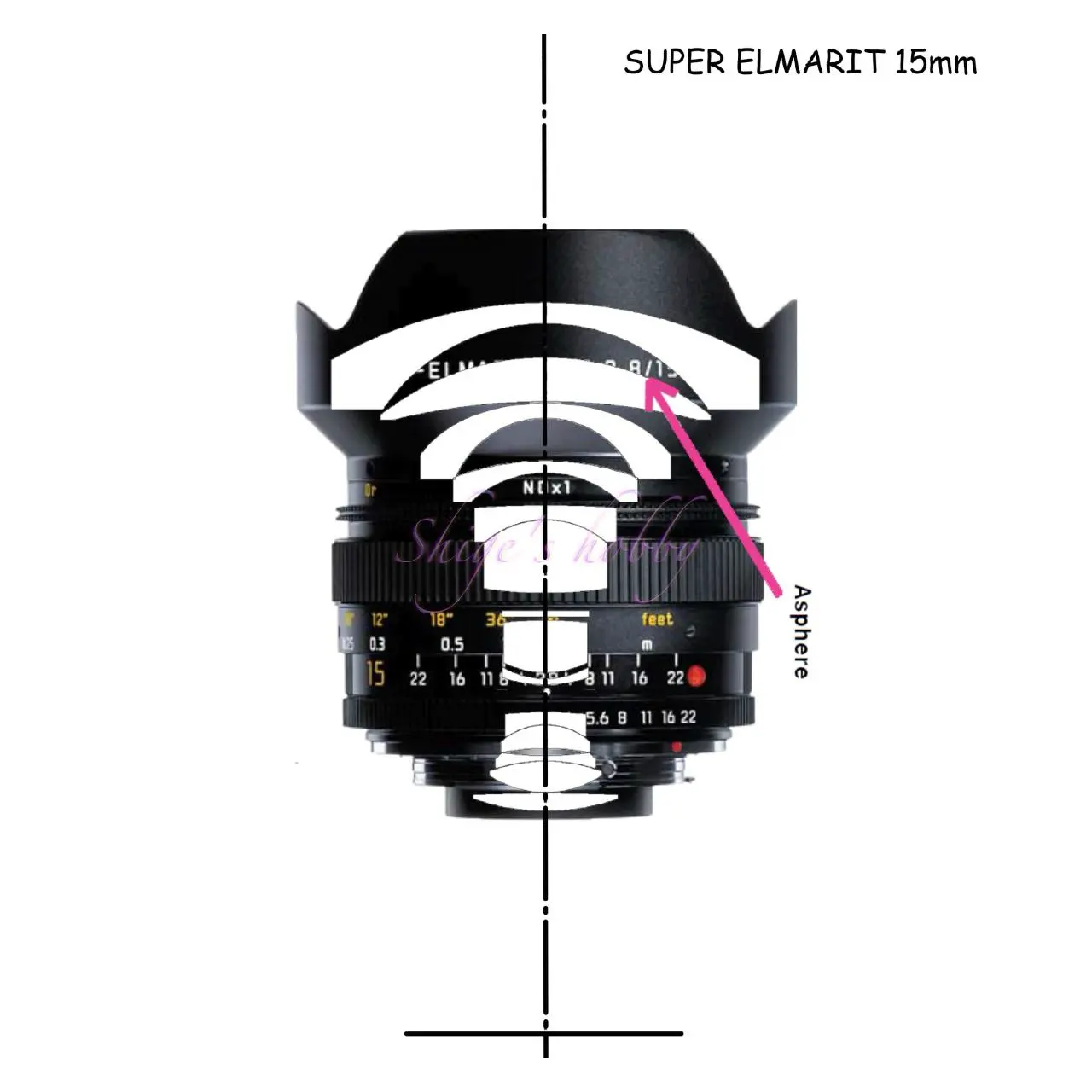
| Item | SUPER ELMAR | SUPER ELMARIT |
| focal length(mm) | 15 | 15 |
| Maximum aperture | 3.5 | 2.8 |
| Minimum aperture | 22 | 22 |
| Lens configuration | 12groups 13elements | 10groups 13elements |
| Leaf blade | 5 | 6 |
| Minimum distance(m) | 0.16 | 0.18 |
| Lens length(mm) | 92.5 | 85.3 |
| Lens max diameter(mm) | 83.5 | 83.5 |
| Filter diameter(mm) | – Filters cannot be attached to the front frame. The lens has four built-in filters. | – Filters cannot be attached to the front frame. The lens has four built-in filters. |
| Weight(g) | 815 | 710 |
| Release date | Year 1979 | Year 2001 |
| Production number | 2980 | 420 |
Reference links
- The description of the SUPER ELMAR 15mm from Leica Wiki
- Canon Leica-R Compatibility Database
- Carl Zeiss DISTAGON T* 15mm F/3.5 [AE]・Lens.DB
- Asahi SMC TAKUMAR 15mm F/3.5・Lens.DB
- Carl Zeiss DISTAGON HFT 15mm F/3.5・Lens.DB
- Nikon AI NIKKOR 15mm F/3.5・Lens.DB
- Art 14mm F1.8 DG HSM・SIGMA Official page
- Art 14mm F1.4 DG DN・SIGMA Official page
Affiliate links
- Leica R lens・Ads by ebay
- Leica M lens・Ads by ebay
- Leica TL・Ads by ebay
- Leica SL・Ads by ebay

Amazon Prime Sale
Update history
- 2025.10.12
- 2025.5.30
- 2025.1.7
- 2024.02.18
- 2022.06.11

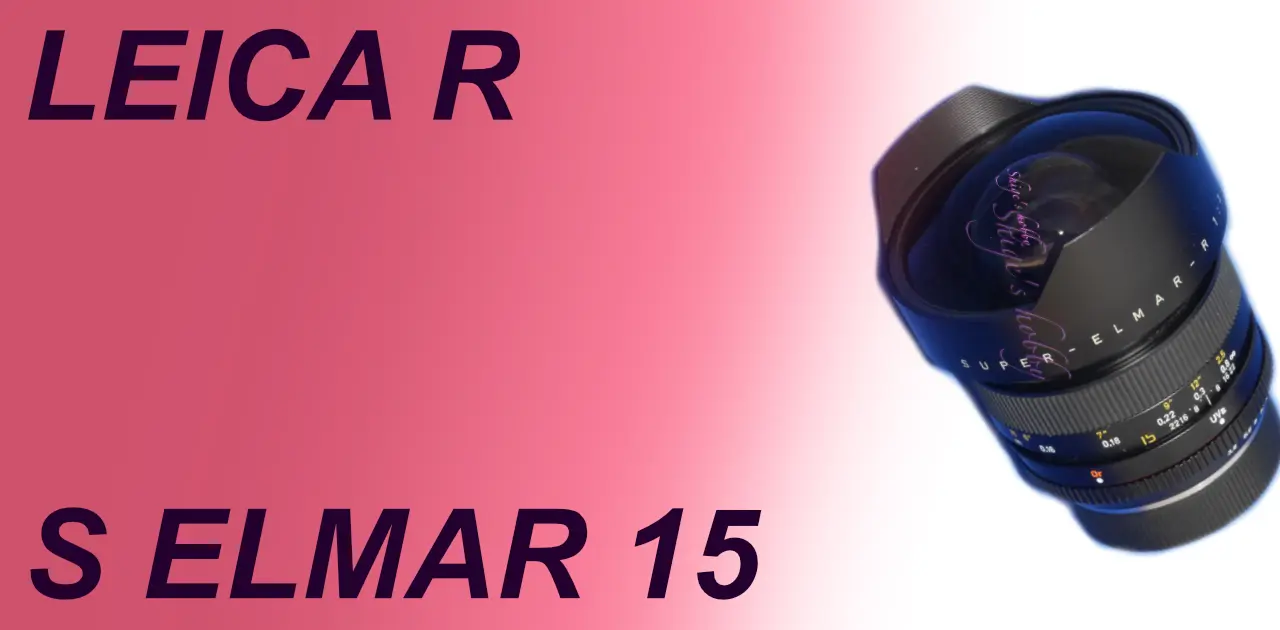

Be First to Comment